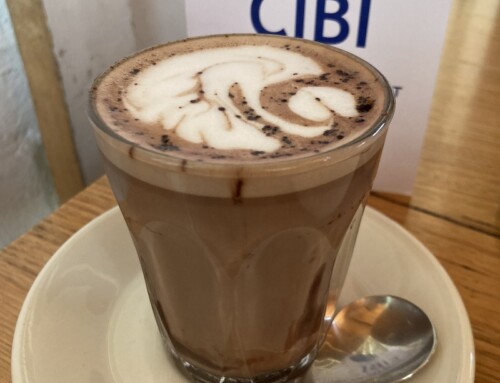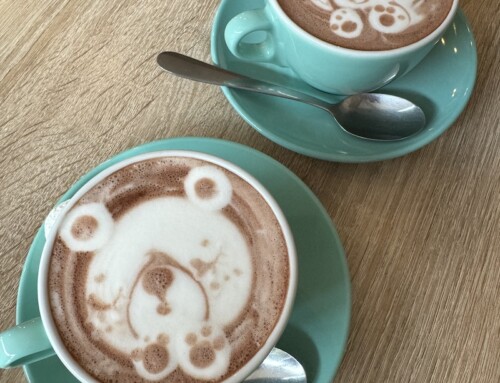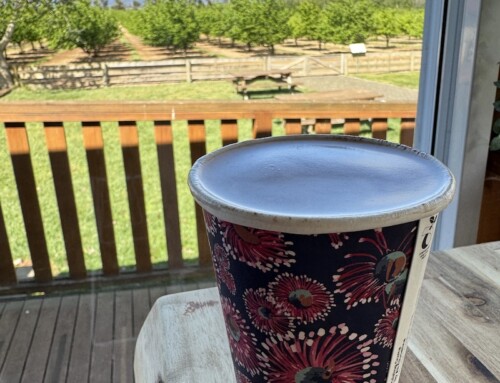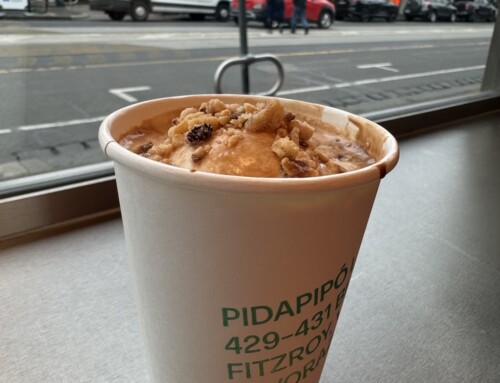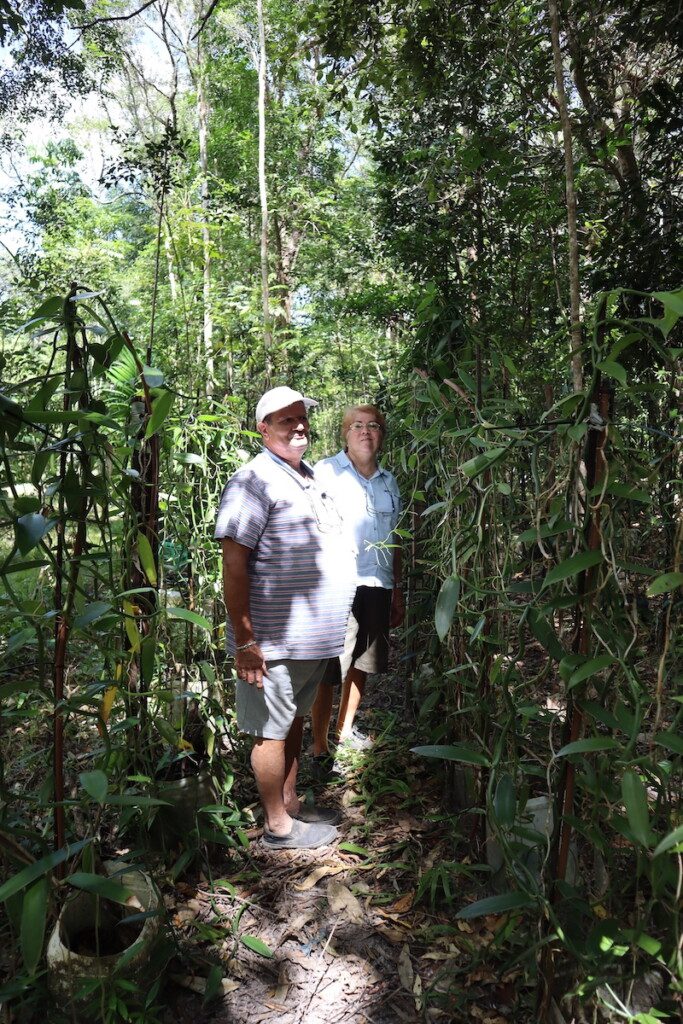
Vanilla has a mixed reputation when it comes to chocolate. Native records suggest that vanilla was added as a flavour in chocolate in Mesoamerica. Today, it is most often added to lower quality chocolate. The reason is that vanilla has an interesting effect on chocolate. It smooths over some (often undesirable) flavours but it can also intensify other more desirable ones too. This is why you will find vanilla added in as an ingredient in most chocolate you buy at the supermarket but hardly ever in fine chocolate.
Consumers are used to tasting vanilla but most of the time what they are tasting isn’t real vanilla but synthetic copies. Real vanilla is more expensive, more time consuming to make, and more delicious. It originated in Mexico. According to the legend, vanilla, which is a type of climbing orchid, was born when princess Zanat fled to the forest with her lover after her father forbid them from marrying. There they were captured and beheaded, and the vanilla vine grew where their blood had touched the ground. Today it is grown in many countries around the world including in Australia.
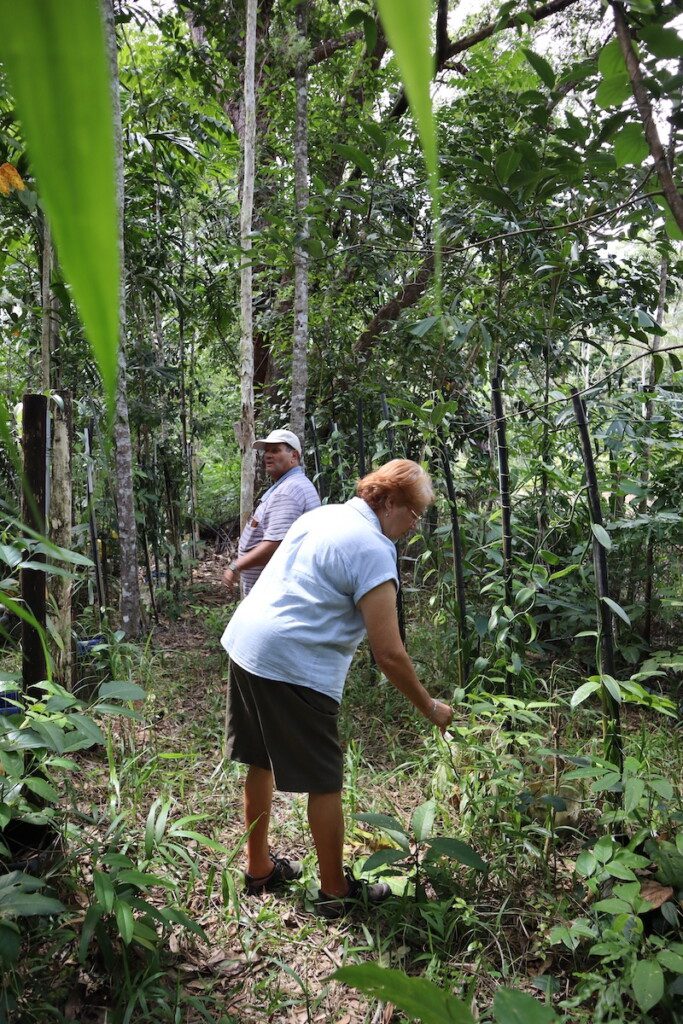
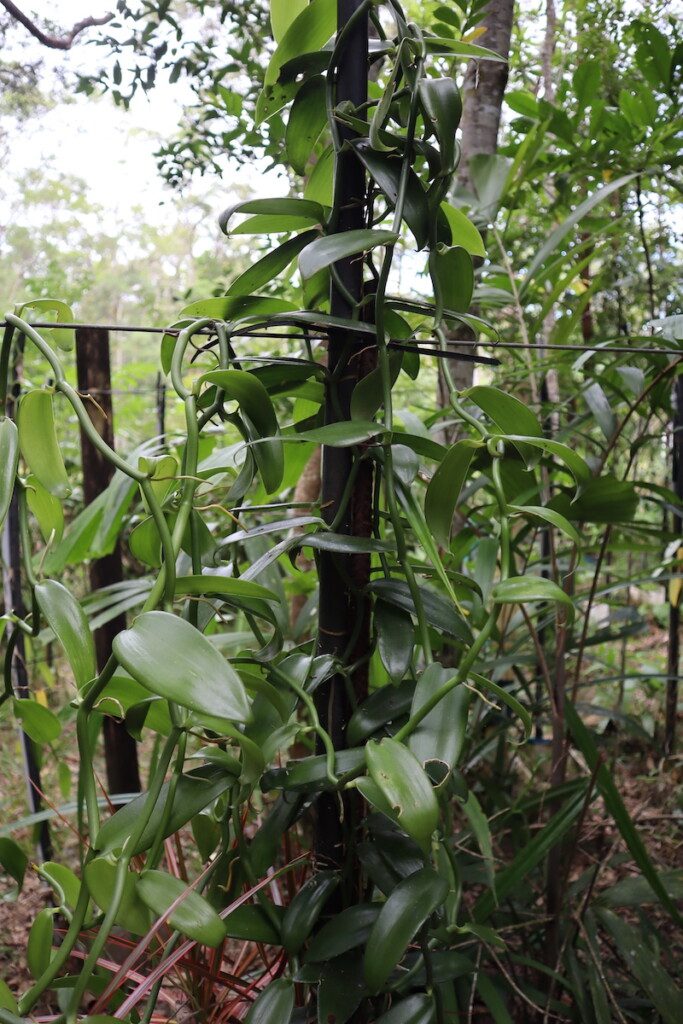
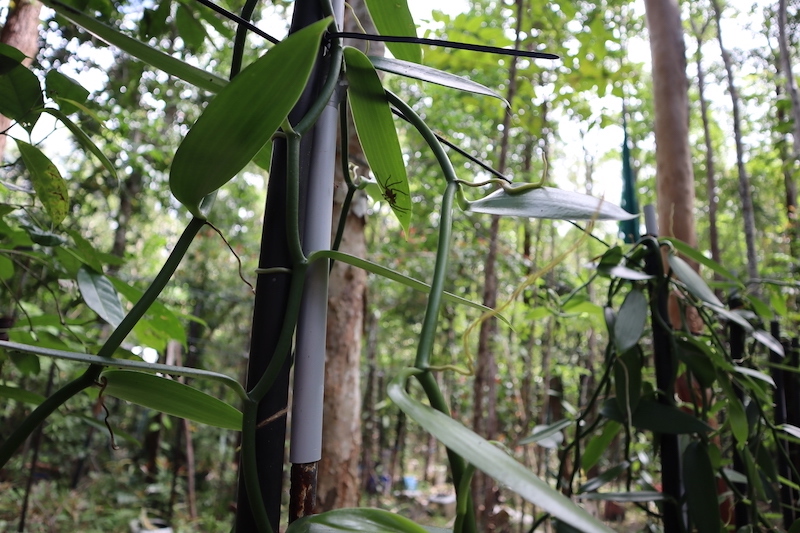
I wanted to learn more about vanilla, so I contacted George and Josette Gonthier from Daintree Vanilla & Spice who have a farm in the beautiful UNESCO World Heritage Listed Daintree Rainforest. George is a storyteller and over a cup of tea and some cakes we listen attentively. Both George and Josette are origially from the Seychelles, “My father was very strict and wouldn’t accept him so he chased me around the world”. The two ended up settling down here in Australia. Originally based in Sydney, they came up to Cairns for a two-week holiday with the kids and then decided to relocate here. I’ve been hearing this same story from everyone I have met on this trip. Far North Queensland seems to pull people in like this.
So why vanilla? “My ancestors used to grow vanilla and they used to put it up to my nose as a toddler. I would grab it and bite on it and it has been with me ever since. Years and years ago people from Seychelles came here with cuttings. A lot of Seychelles people that live in Cairns have a vine or two in their backyard”. They accumulated vines as friends gave them cuttings “then one year my cousin was selling his property and he told me he had a vine and to come get it. When I arrived, the vine was huge! So, we started slowly”.

We spend some time walking through rows of vanilla vines surrounded by lush rainforest, unwrapping the vines that have made their way up the trees and placing them back on the trellises to make it easier to harvest them later. “When we started planting this was all clean, but the jungle quickly takes over if you aren’t careful.” Josette and I go in search of a ripe vanilla bean, “This year we haven’t had a lot of vanilla up here because there has been too much rain, but at home in Cairns we have lots of flower buds”. Just when I thought all hope was lost, Josette finds a ripe bean for me. It looks like a long green bean except it has the most beautiful perfume, much more like jasmine than like vanilla. “Just put it on the dashboard of your car”, Josette recommends, “the sun will make it brown then you can use it”.
In Mexico there are bees that pollinate the vanilla flowers “that’s why in history the Mexican’s would give away vanilla cuttings, because they knew the other countries couldn’t pollinate them. But then a slave boy discovered a way to pollinate the flowers by hand and that is how we do it today, one by one”. Apparently, the vanilla flowers smell like kerosene here so Australian bees just aren’t interested (understandably).
After a flower is pollinated, it takes 9 months before the beans are ready to be harvested and then many more months before it is ready to sell, “That’s why a lot of people don’t want to do it, it takes a lot of time and a lot of know how” adds George. Once picked, the vanilla is blanched for a few minutes to “kill” the bean. Then they go through a sweating stage where the beans are wrapped tightly for several weeks which triggers enzymes to convert cellulose and starches to vanillin. These are now ready to be dried, either in a dryer or in the sun, which can take anywhere from a few weeks to a few months depending on the size of the beans and the method of drying. The beans are then placed in plastic bags where they go through a conditioning phase for at least 3 months before being ready to use.
Today the farm is for sale as George and Josette look forward to a quieter, less labour-intensive retirement. But it is clear that George has a lot of knowledge to share about growing vanilla here and abroad and he shared many stories with us. “Every country processes differently. In Jamaica they light a fire under a roofing iron and then cover that with sand and then green leaves, coconut leaves mainly and cover it up with sand again. The heat that generates stays in the sand for ages and they don’t need to set the fire up again. They then put the vanilla beans on top of that sand. When it changes colour the next day, they take it out.” There are others growing vanilla or that are interested in growing vanilla in the region, and many come to George for advice. In fact, he has provided many of them with vines. “I always say I will teach them what they want to know but mostly they just want to send us their green beans. It’s difficult to get the quality right if you process the vanilla yourself, plus you need a market to sell them in”.
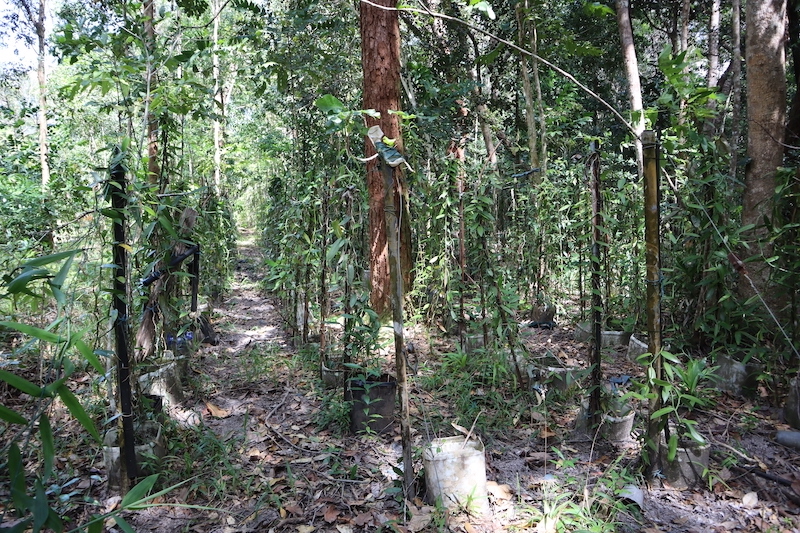
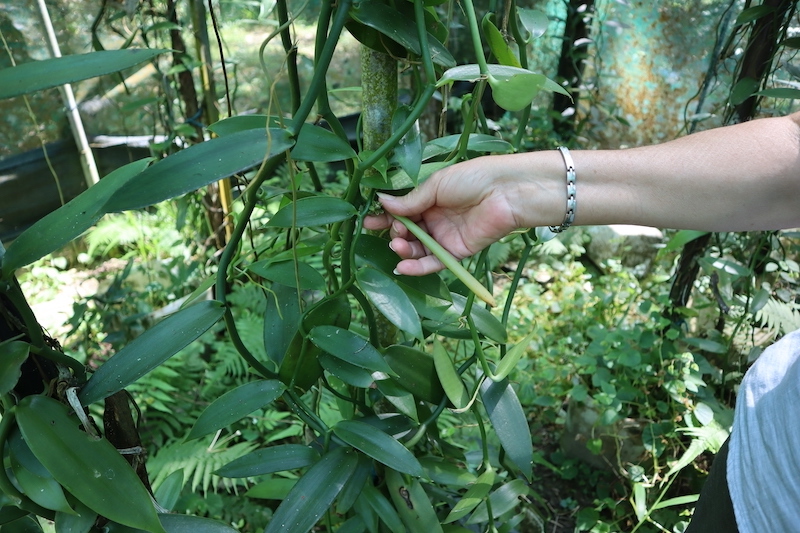
George and Josette don’t just grow vanilla. They grow a range of other spices on their property. In 2014, they won the ABC delicious produce award for their ground cinnamon. Cinnamon from abroad is often smoked when it is processed but not in Australia which gives it a unique flavour. It, like vanilla, also requires patience as cinnamon takes seven years to grow and then must be cut, debarked, dried and ground. This recognition brought them a lot of attention, including an invitation to be part of Masterchef Australia. They have also sold their products over the years to many leading restaurants and chefs in Australia.
You can buy all of Daintree Vanilla and Spice’s products through their online shop including vanilla beans and vanilla extract. They also make a Vanilla Tea using tea from Daintree Tea gown just a few kilometres away. Vanilla sugar with added cinnamon and nutmeg looks perfect for sprinkling on desserts and vanilla salt is apparently great for seasoning savoury dishes. They also have a vanilla honey with cinnamon which we slathered on toast every morning. “They say vanilla is sweet, but it isn’t sweet. We do savoury as well as vanilla salt and lime zest. You can use that in a salad. There are so many things you can do with vanilla. Last night I cooked some yams, sweet potatoes and ripened banana with coconut milk, sugar, vanilla, cinnamon and nutmeg.” That all sounds good to me!


